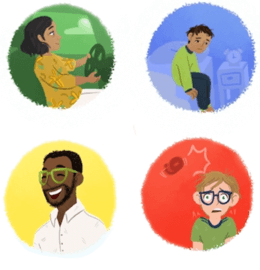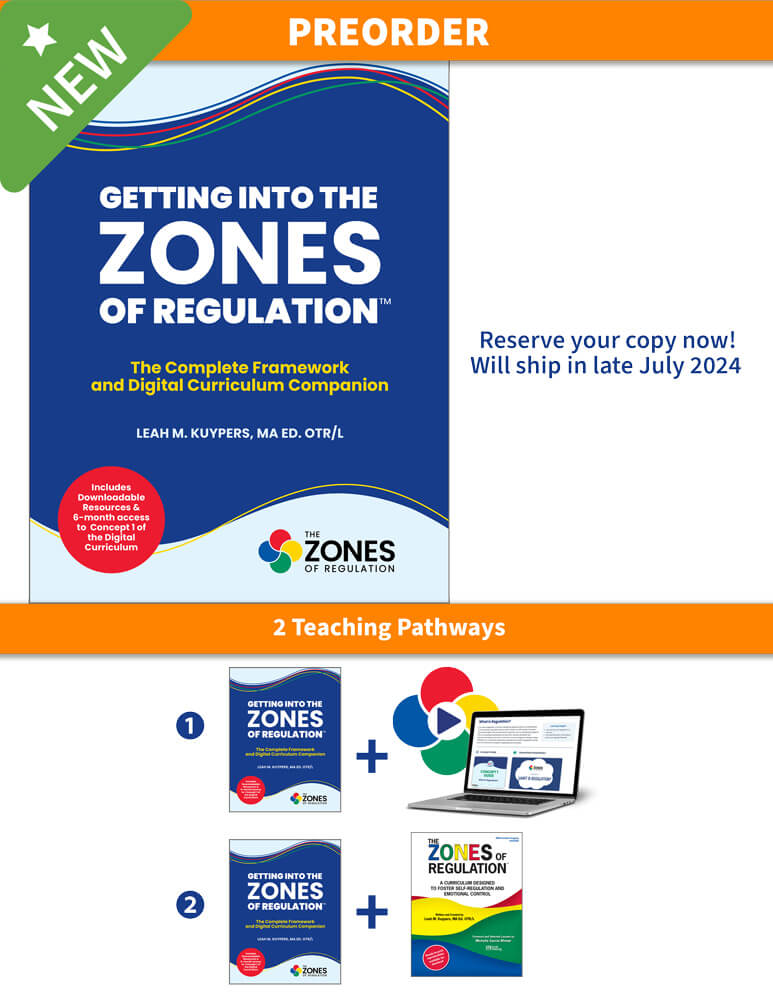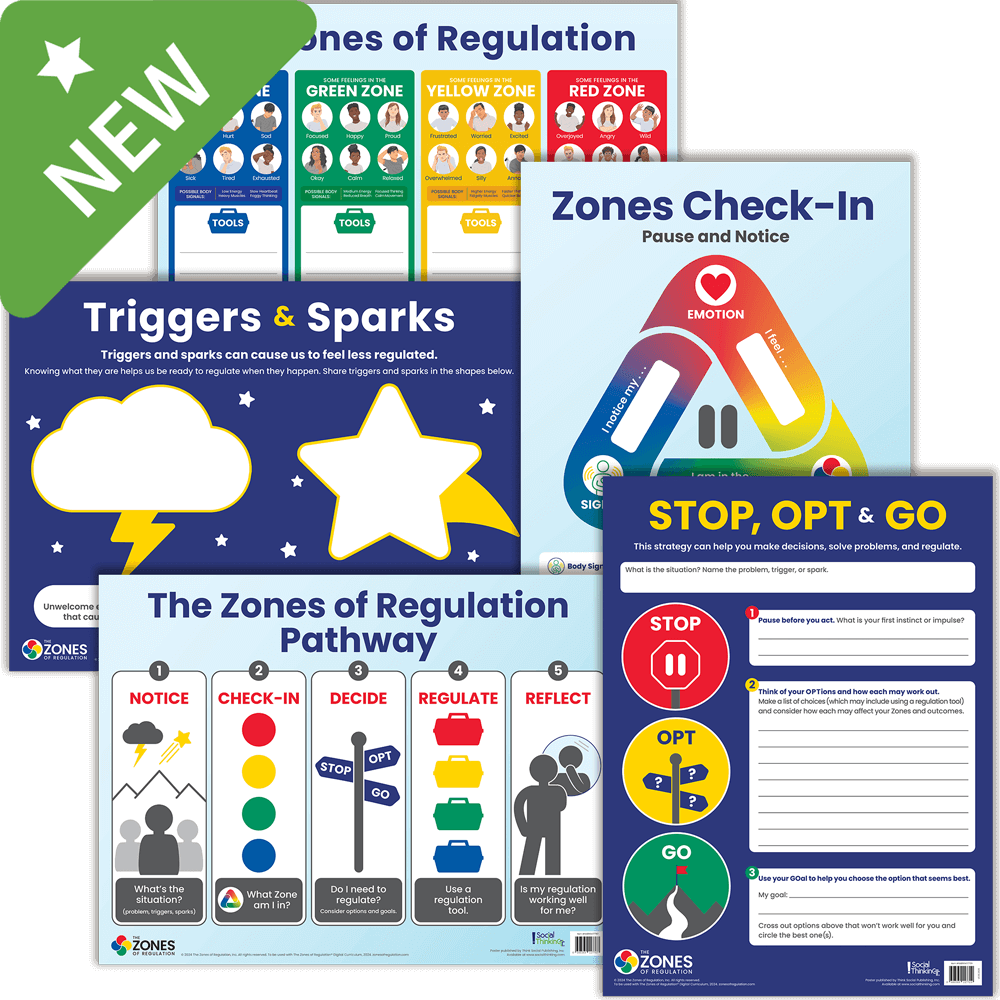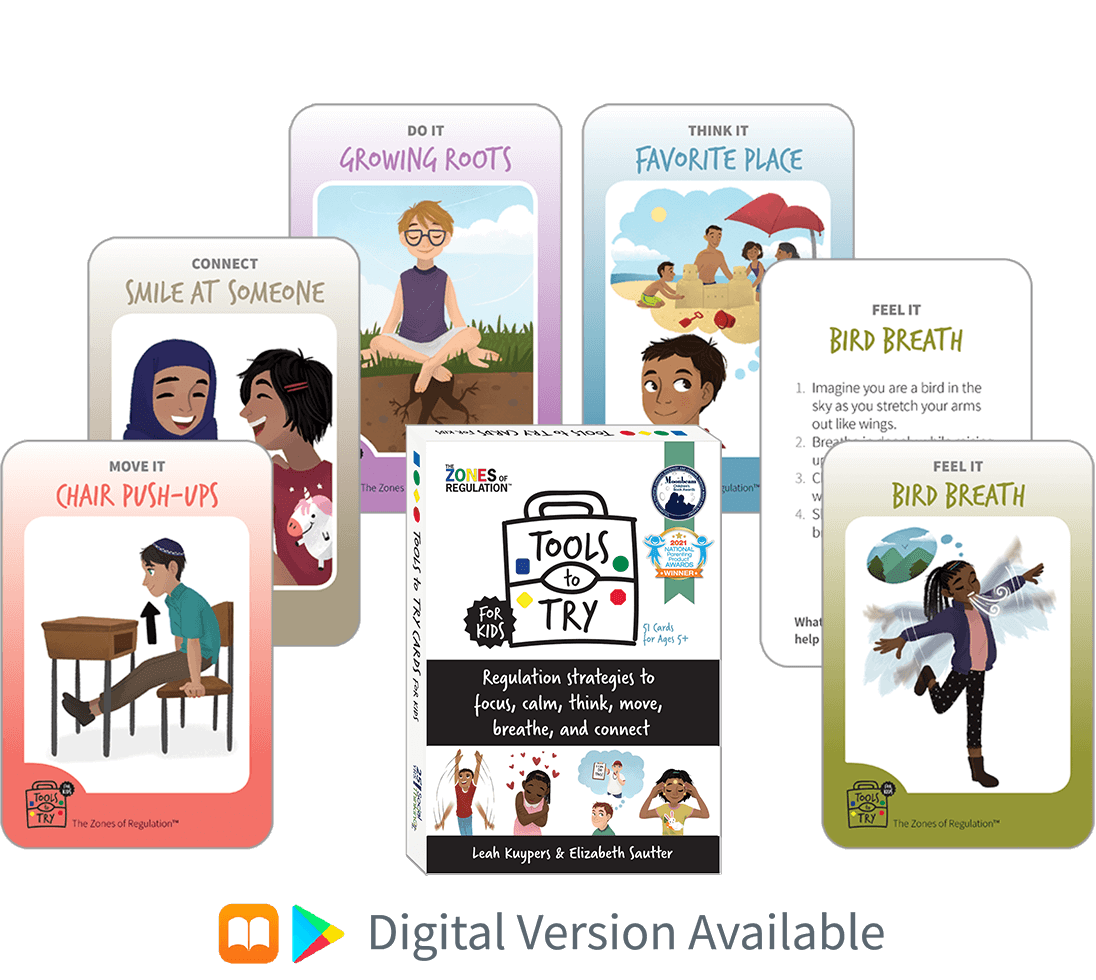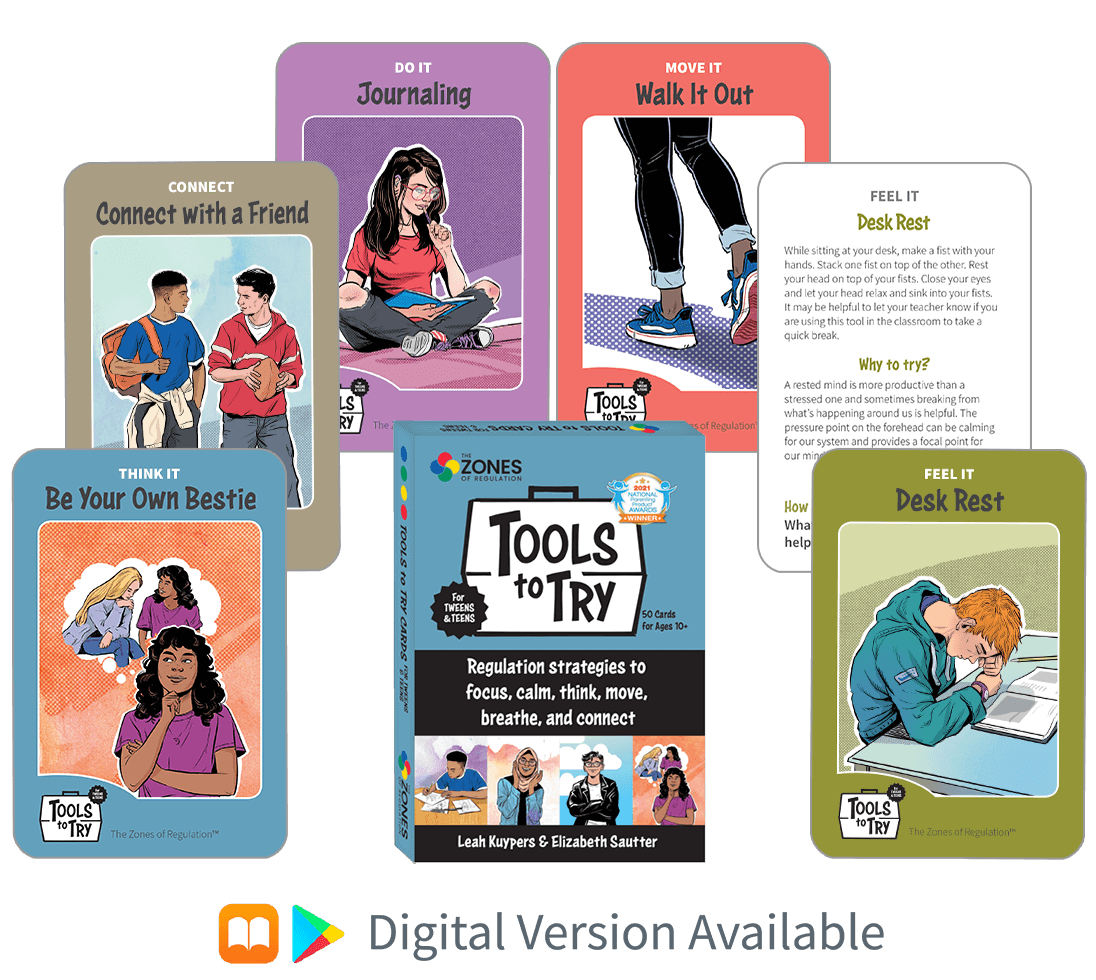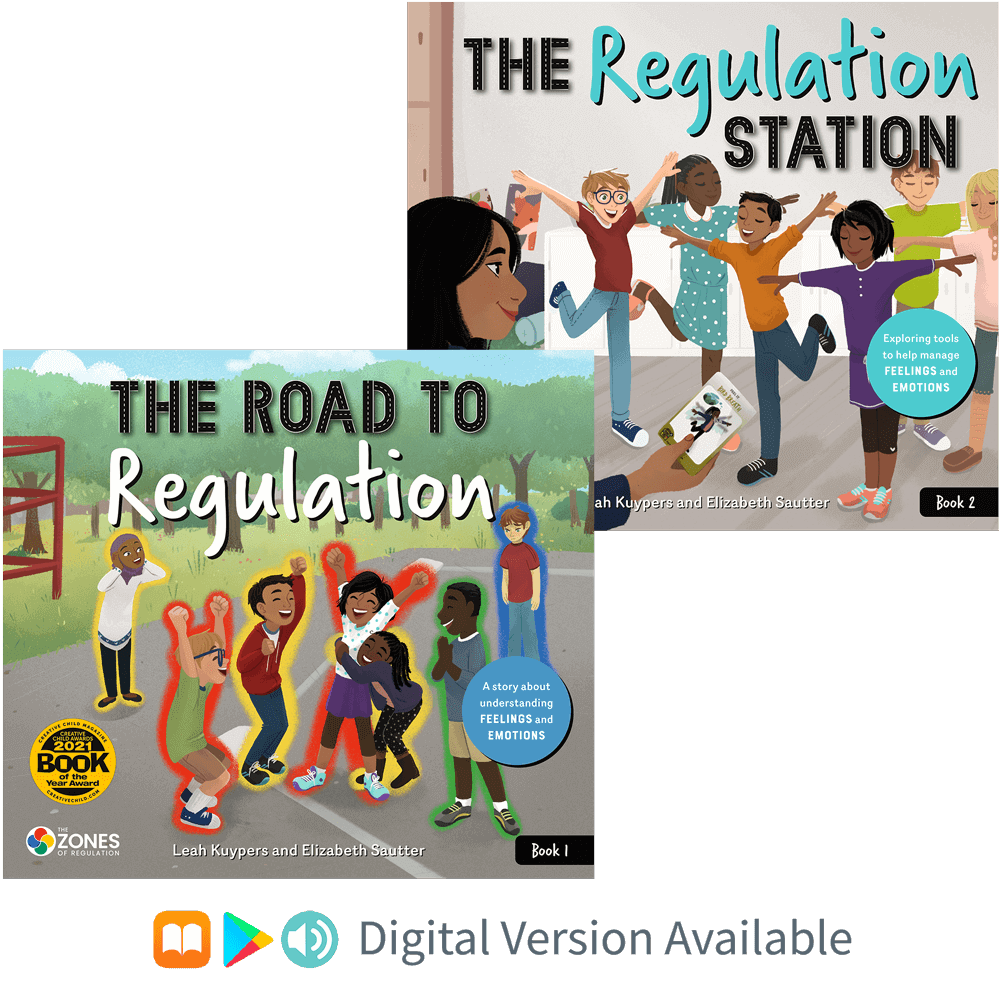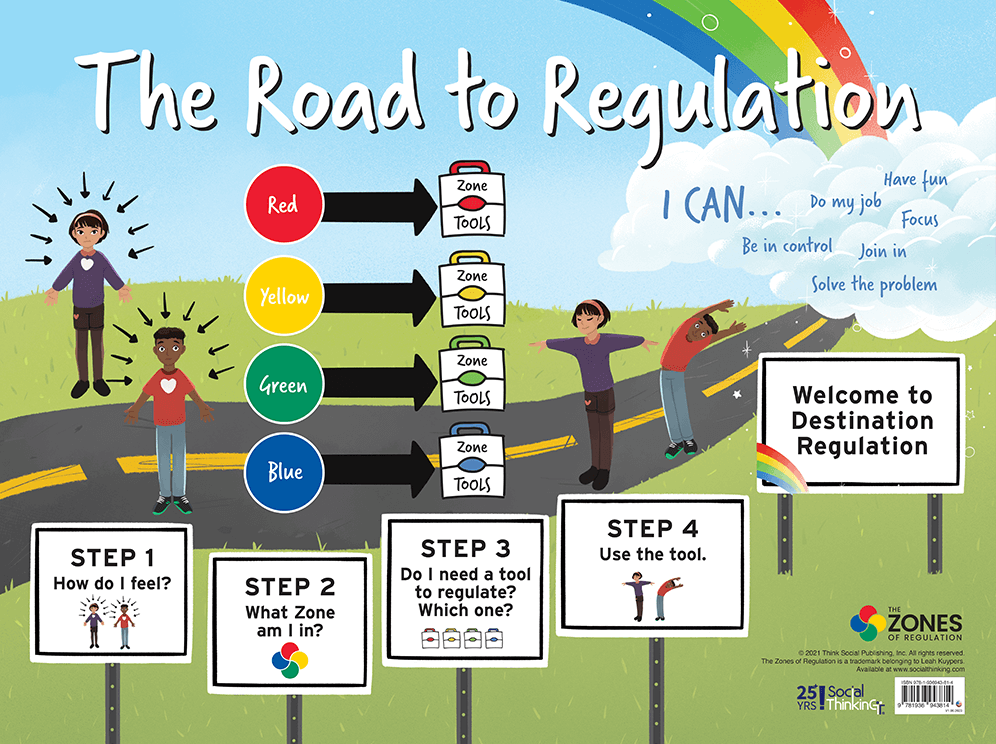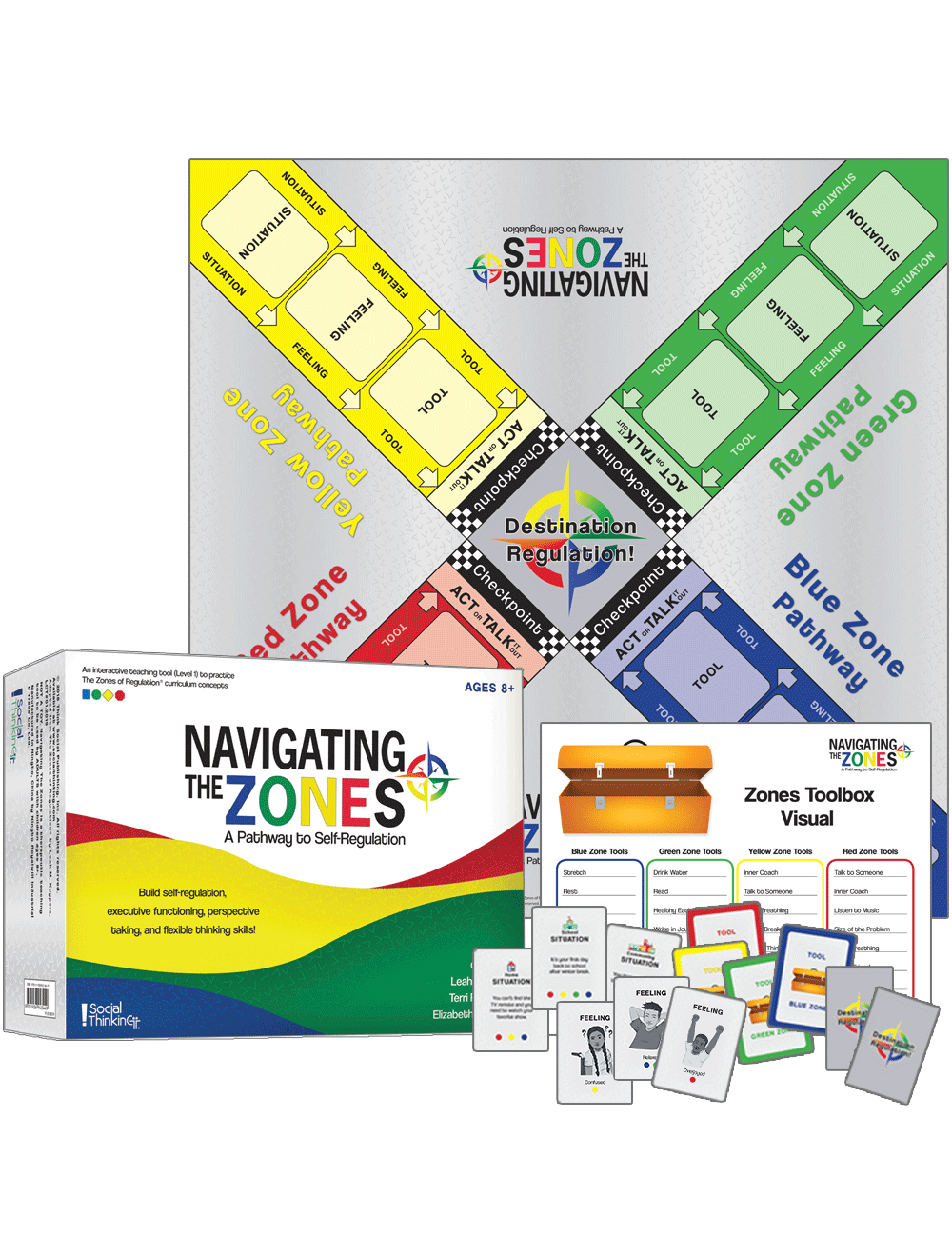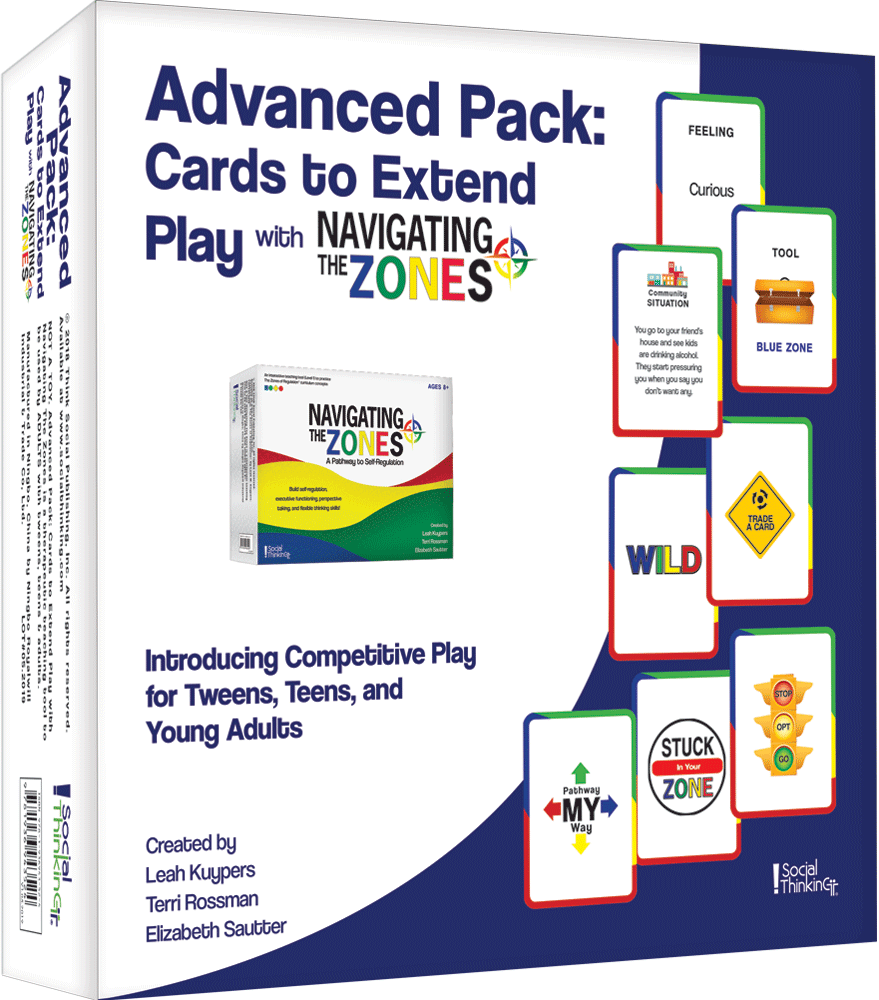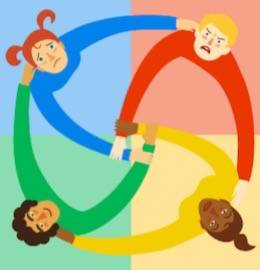Those of you who are seasoned at using The Zones of Regulation framework are very familiar with the core tenant and phrase “All the Zones are OK.” So, if we really mean that all the Zones are OK, why are we asking kids to “get back to Green”?
If you’re new to The Zones, The Zones of Regulation Framework and Curriculum (Leah Kuypers, 2011) teaches learners scaffolded skills toward developing a cognitive pathway to build awareness of their feelings/internal state and utilize a variety of tools and strategies for regulation, prosocial skills, self-care, and overall wellness. This includes exploring tools and strategies for mindfulness, sensory integration, movement, thinking strategies, and healthy connection with others.
When it comes to The Zones of Regulation, it is imperative to state, restate, and restate again that there is no “good Zone” or “bad Zone”; and that all Zones - the full rainbow spectrum of emotions - are expected in life. In fact, many of us grownups spend a great deal of our lives in the Blue or Yellow Zone, so why put undue pressure on children and young adults to be in the Green Zone? While the Green Zone certainly feels good and can be beneficial for learning, there is no best Zone. When we deny the existence and need for this full emotional experience, we are teaching our learners that they need to “calm down” no matter the context or situation. This is at odds with the fundamental principles of The Zones and its philosophy of meeting each individual where they are, in the moment, and honoring their authentic feelings and state.
Let’s consider that cognitive pathway that we are teaching in The Zones of Regulation lessons. First, we figure out how we are feeling internally and categorize this feeling/energy state into one of our four colored Zones: Blue, Green, Yellow, or Red. Once we know which Zone we’re in, we can think about the context and decide if we need to regulate, or manage it. These Zones categories also help us to determine which tools and strategies we may want to try to help us regulate that particular Zone.
I’d like to illustrate this by thinking through an example from my own (grownup) life. A few weeks ago, my kids went back to school after almost a year at home in distance learning due to COVID-19. After their very first day back at school, I stood eagerly awaiting my kids (kindergarten and 2nd grade) at the bus stop, already in the Yellow Zone as a parent nervous about her kids being in a school building. When the bus pulled up, my kindergartener hopped off the bus, but his older brother was nowhere to be found.
Trigger? Lost kid.
Zone? Full-on Mama Bear Red Zone.
Did I need to “get back to Green” at this moment? Absolutely not.
Now, let’s layer on the context. I was in a total panic, but I had my 6-year-old with me that had just taken his very first bus ride, and I really didn’t want him to be afraid of the bus. I needed to use my tools to regulate my Red Zone. Had my little guy not been there, I would have had a much different reaction. That’s why context matters.
I was in the Red Zone all throughout the six or so phone calls it took to ensure my son would get home safely, through him being dropped off at the door, and even for a while after he got home. I didn’t need to move out of the Red Zone, I needed to TAKE CARE OF MY RED ZONE. By using my Red Zone regulation tools (deep breathing, limit noise, fresh air), I was able to pause and strategize how to locate my older son and get him home swiftly and safely while also ensuring the comfort and care for my younger son. I was terrified but effective with regard to my goals and actions, and eventually my Red Zone simmered down into the Yellow Zone.
So, how does this play out when we are teaching kids, teens, and adults about The Zones? Our language is important. Instead of saying that we are using tools to “get back to the Green Zone,” consider using some of these phrases instead:
- “Let’s use a tool to take care of our Zones.”
- “I wonder if a tool might help us manage our Zones right now?”
- “I need a tool to regulate my Zone, how about you?”
- “What Zone are you in? Is there a tool that might help?”
- “What is your goal right now? Would a tool help you meet it?”
- ““Let’s find a ____ (color Zone learner identifies in) tool to help you____(get back to the fun, follow the schedule, finish your work. . .).”
The point is to emphasize that when we are dysregulated, we don’t need to change Zones, we need to regulate within, manage, or take care of our Zone. This allows us to honor our authentic feelings while meeting the demands of the environment around us, helping us to accomplish our goals, and supporting our well-being. Sometimes we end up in the Green Zone, but often we don’t, and as the saying goes “All the Zones are OK.” So, do we really need to “get back to the Green Zone”? We think not.
About the author
Emily Walz is an Implementation Specialist for The Zones of Regulation®. She is a licensed special education teacher (MS-Special Education LD/EBD/DCD) with 15 years of teaching experience working with unique learners in New York City and the Minneapolis/St. Paul metro area. In her teaching career she has worked predominantly with elementary and middle school learners with special needs in both resource/inclusion and self-contained settings and has come to specialize in social emotional learning. Emily has held the role of school-based Social Emotional Learning Coordinator and is deeply passionate about the impact that SEL instruction has on equity and inclusion in schools. In her role at The Zones of Regulation, Emily is primarily working toward developing resources and capacity around implementing The Zones schoolwide, as well as training and consulting with schools and districts in the USA and abroad. She lives on a sunny corner in Minneapolis, Minnesota with her husband and two sons.
Leah Kuypers is the creator and author of The Zones of Regulation, a framework used to foster self-regulation and emotional control. The Zones of Regulation (Kuypers, 2011) has been enthusiastically received by educators, therapists, and parents around the world. In addition to developing additional learning tools to supplement The Zones curriculum, she owns a small business, Kuypers Consulting, Inc., based out of Minneapolis, Minnesota. She enjoys providing training and consultations to parents, schools, and professionals by offering workshops on self-regulation and The Zones framework to groups locally, around the United States, and internationally. To learn more about Leah and her journey to developing The Zones of Regulation click here.
© 2022 The Zones of Regulation









